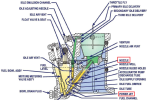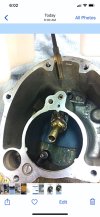- Joined
- Jun 13, 2008
- Messages
- 7,837
- Location
- Marietta, GA
- Display Name
Display name:
Drake the Outlaw
I flew 40 hours of break-in on a brand new IO-540 last June/July. Temperatures here were in the 90's every day. I took screen grabs of the engine monitor data. Oil temps were typically in the mid-upper 180's, running at ~70% power. On the first flight, running 82% power, the oil temp was 204F.
I'd ground the airplane at 265 and find the problem.
I'd ground the airplane at 265 and find the problem.


